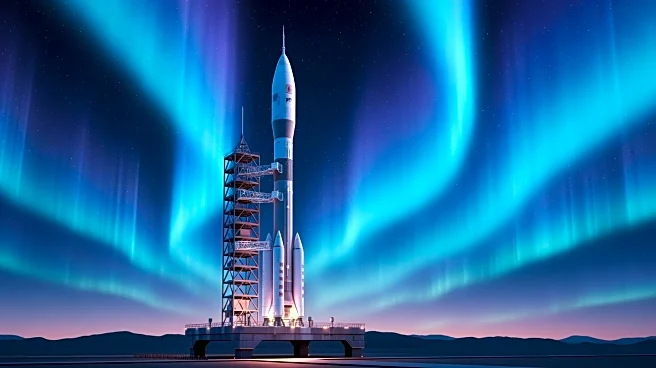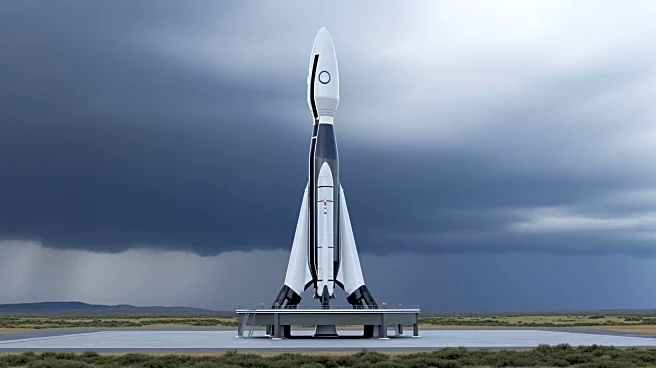What's Happening?
A severe geomagnetic storm, classified as G4 by the U.S. National Oceanic and Atmospheric Administration (NOAA), is currently affecting Earth, causing disruptions in radio communications and GPS accuracy.
The European Space Agency (ESA) has warned of a third coronal mass ejection (CME) that could arrive soon, potentially prolonging these disruptions. The British Geological Survey (BGS) has raised its forecast to the highest intensity, indicating this could be the largest solar storm to affect the UK in over two decades. The storm is driven by multiple CMEs, with a faster CME merging with slower ones, creating a 'cannibal' storm that amplifies impacts.
Why It's Important?
The severe solar storm has significant implications for various sectors, including aviation, agriculture, and logistics, due to degraded GPS precision. Satellite operations are at risk of increased drag and radiation exposure, potentially leading to operational anomalies. Power grids may experience voltage irregularities due to geomagnetically induced currents. The storm also offers a rare opportunity for aurora sightings across North America and the UK, although it poses no direct biological threat to humans. NASA has postponed the launch of Blue Origin's Mars mission due to elevated solar activity, highlighting the storm's impact on spaceflight operations.
What's Next?
ESA forecasts that severe geomagnetic activity may continue into the latter part of the week, depending on whether the incoming CME merges with earlier ones. This will determine the duration and intensity of the storm conditions. Stakeholders in affected industries are advised to monitor updates from national space-weather agencies and adjust operations accordingly. The public is encouraged to check visibility guidance for aurora sightings, which depend on local weather conditions.
Beyond the Headlines
The ongoing solar storm underscores the vulnerability of modern technology to space weather events. It highlights the need for robust systems to mitigate disruptions in critical infrastructure, such as power grids and communication networks. The event also serves as a reminder of the interconnectedness of global systems, where a natural phenomenon can have widespread impacts across multiple sectors.












